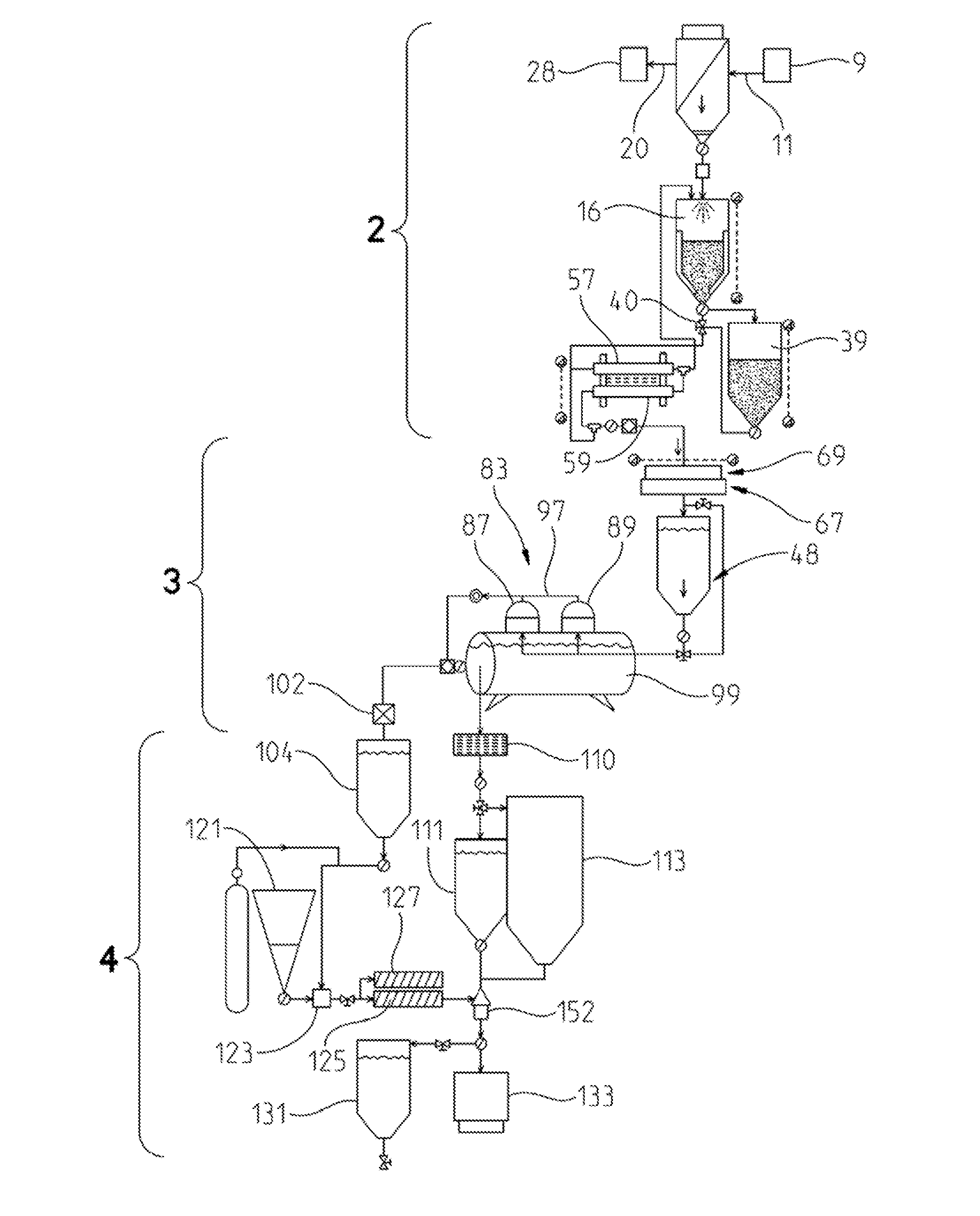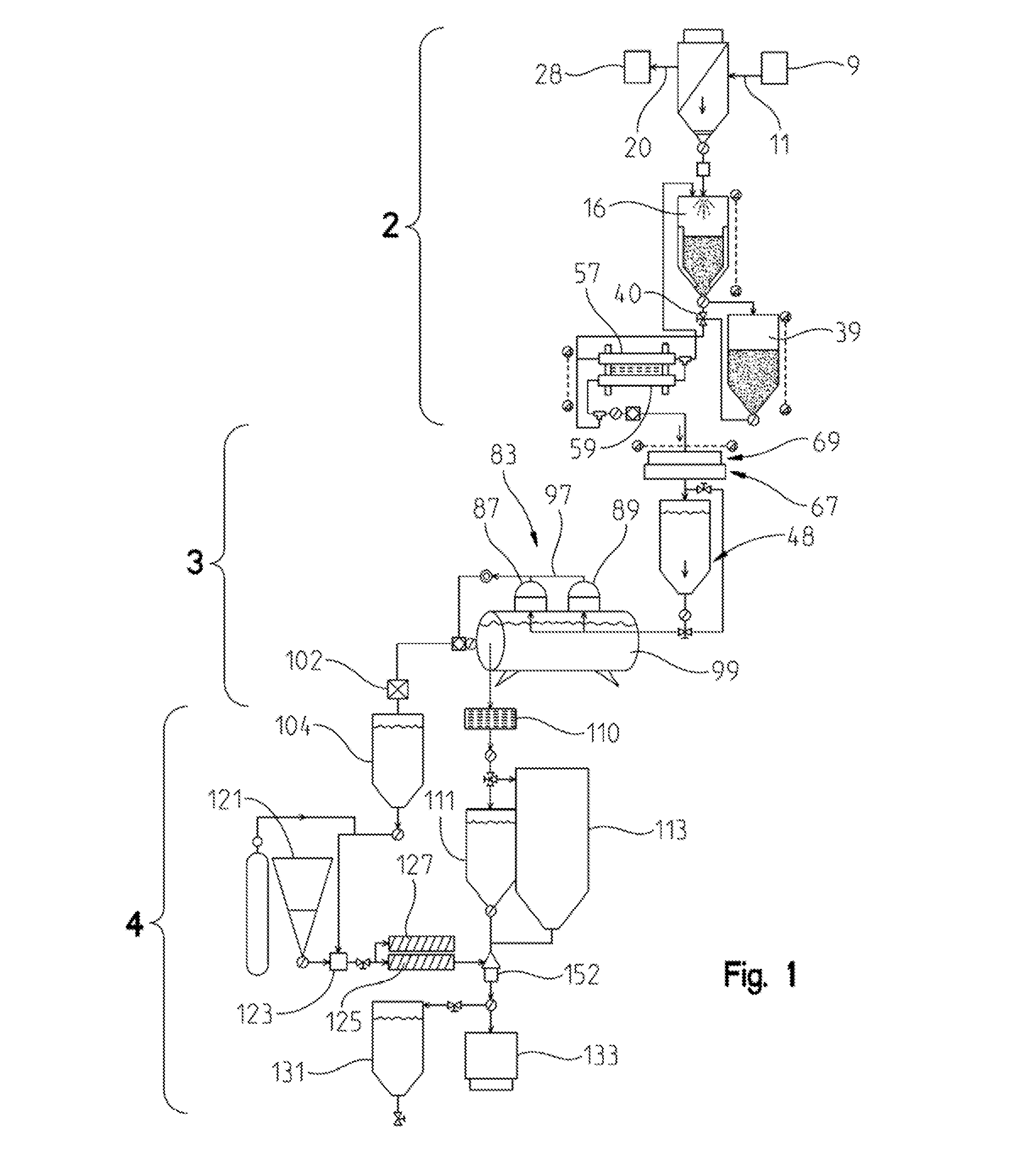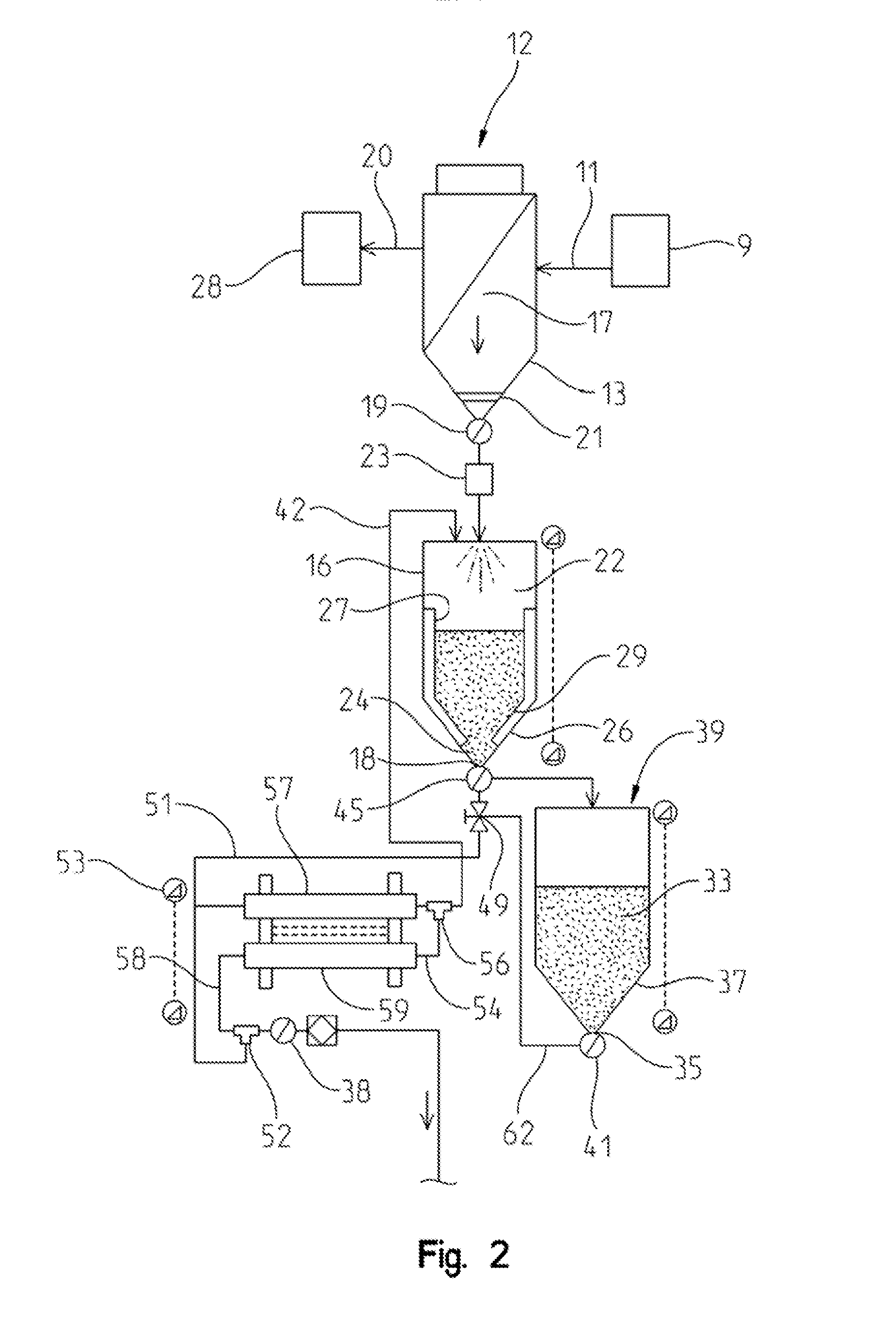Continuous coolant purification process and device
a technology of continuous coolant and purification process, which is applied in the direction of vacuum distillation separation, separation process, evaporation, etc., can solve the problems of large high energy inputs for anti-freeze coolant composition wear, and high energy inputs for traditional distillation processes, so as to achieve high value for smelters, high value for reuse, and high effect of effective trapping
- Summary
- Abstract
- Description
- Claims
- Application Information
AI Technical Summary
Benefits of technology
Problems solved by technology
Method used
Image
Examples
embodiment 300
[0115]An alternate embodiment 300 is designed to include a container 302 such as a 53 foot ISO shipping container for housing some or all of the components. Information about ISO shipping containers can be found at www.shippingcontainers24.com, which descriptions are incorporated herein. It will be noted that some of the components are shown inside the container 302, whereas others are shown being outside the container 302. For reasons of size and safety related primarily to notions of venting potentially flammable hydrocarbons, and isolating such hydrocarbons from possible sources of ignition, the first and second storage tanks 314, 324, oil separator 338, and activated charcoal filter 348 are preferably placed outside the container 302. However, in a device that is designed to be portable, these components can be placed in a separate container (or a separate compartment within the same container), with fluid connections between the container (or compartment) in which the first and...
first embodiment
[0116]In the description below, size and quantity figures are given for some of the components, to illustrate one particular preferred embodiment of the present invention. The primary purpose for giving these dimensions is to better enable the disclosure for the reader. It will be appreciated however, that the device 300 of the present invention, and the first embodiment shown in FIGS. 1-8 are infinitely scalable. As such, the sizes of the components could be increased or decreased depending on factors such as space and desired throughput. Additionally, the size of particular components such as the oil water separator 338 and carbon absorption tank 348, can be up sized or downsized relative to other components in the system 300, to meet particular needs. For example, as stated above, spent coolant that is removed from automobile scrap yards tends to have a higher oil content than industrial propylene glycol waste that is removed from a hospital or industrial facility, and spent ethy...
PUM
| Property | Measurement | Unit |
|---|---|---|
| size | aaaaa | aaaaa |
| size | aaaaa | aaaaa |
| size | aaaaa | aaaaa |
Abstract
Description
Claims
Application Information
 Login to View More
Login to View More - R&D
- Intellectual Property
- Life Sciences
- Materials
- Tech Scout
- Unparalleled Data Quality
- Higher Quality Content
- 60% Fewer Hallucinations
Browse by: Latest US Patents, China's latest patents, Technical Efficacy Thesaurus, Application Domain, Technology Topic, Popular Technical Reports.
© 2025 PatSnap. All rights reserved.Legal|Privacy policy|Modern Slavery Act Transparency Statement|Sitemap|About US| Contact US: help@patsnap.com



